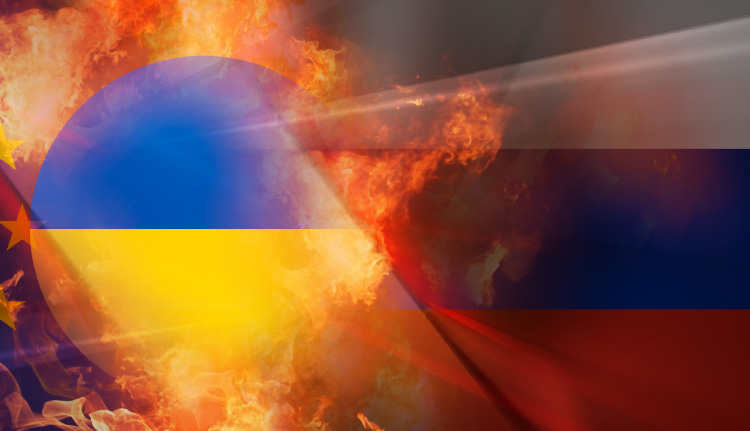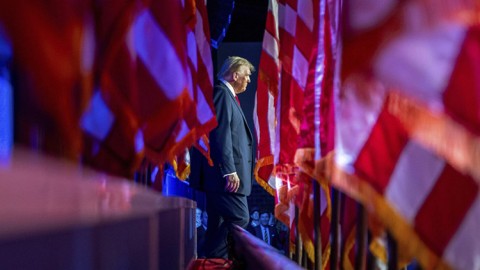As the Ukraine-Russia conflict enters its third year, the dynamics on the ground and the geopolitical landscape surrounding it continue to evolve, presenting a myriad of scenarios that could shape the future trajectory of the war. The recent commemorations marking the second anniversary of Russia’s full-scale attack on Ukraine have brought Western leaders to Kyiv, underscoring their solidarity with Ukraine in its struggle against Russian. However, amidst these gestures of support, the conflict finds itself in a complex and uncertain phase.
Stalemate and Strategic Realignment
At the onset of the war’s third year, the conflict appears to have reached a stalemate of sorts. Neither side seems poised for dramatic advancements, yet neither is it a complete deadlock. Russian forces have displayed advantages in manpower and ammunition, prompting Ukrainian troops to withdraw from several positions in the east of the country. Ukrainian President Volodymyr Zelenskyy’s government faces a critical juncture where continued Western support is paramount for Ukraine’s survival. Even a recent shakeup of the Ukrainian army leadership failed to make any difference on the ground.
For several experts, the trajectory of the conflict in 2024 hinges on several critical factors. Foremost among these are supplies, information dissemination, and the political will of both domestic and international actors. Both Russia and Ukraine are engaged in a race to bolster their military resources, including personnel and weaponry. Reports suggest that both sides are grappling with maintaining sufficient levels of ammunition, with Ukraine reliant on foreign military equipment and facing delays in procurement.
Russia’s advantage in population size gives it a significant edge in mobilizing troops, while Ukraine struggles for military expansion. In the meantime, Western restrictions on Ukraine’s access to advanced weaponry to avoid escalating the conflict pose challenges for Kyiv. The slow pace of NATO and US deliveries has exacerbated Ukraine’s material shortages.
The conflict’s outcome is not solely determined by events on the ground; international politics play a pivotal role. In the United States, aid to Ukraine has become politicized, with partisan divides influencing decisions on financial assistance. While the US and key European allies have ruled out sending ground troops to Ukraine, debates over aid packages and geopolitical posturing shape their approach to the conflict.
The looming 2024 presidential elections in the US add another layer of complexity. Potential shifts in leadership and policy directions could impact Ukraine’s access to critical aid and support. In the event of a Trump victory, a more adversarial stance towards Ukraine may emerge, further straining transatlantic relations. European Union members, grappling with the influx of Ukrainian refugees and energy concerns, face internal challenges in sustaining long-term support for Ukraine.
Energy Dynamics and Economic Implications
As the conflict between Ukraine and Russia enters its third year, the intricate dance of geopolitics continues to intertwine with global energy dynamics, reshaping economic landscapes and altering energy flows across the world. Amidst this turmoil, both Ukraine and Russia grapple with the economic fallout, while the international community watches closely, assessing the effectiveness of sanctions and the resilience of the involved economies.
Despite facing extensive Western sanctions, the Russian economy has displayed remarkable resilience. The International Monetary Fund (IMF) recently revised its growth forecast for Russia, predicting a robust growth rate of 2.6% in 2024, more than double its previous estimate. This upward revision raises pertinent questions about the efficacy of sanctions, especially as the United States and the European Union (EU) contemplate imposing additional measures.
In stark contrast, Ukraine’s economic trajectory has been tumultuous. Following Russia’s attack in 2022, Ukraine experienced a staggering 30% decline in its gross domestic product (GDP). However, in 2023, the country witnessed a surprising economic rebound, with the National Bank of Ukraine reporting a real GDP growth rate of 5.7%, far surpassing initial forecasts. Despite this recovery, uncertainties loom over Ukraine’s economic future, contingent upon the duration and intensity of the ongoing conflict.
The conflict’s impact on global energy dynamics has been profound. Europe, in particular, has significantly reduced its dependence on Russian gas, with imports plummeting from 1,500 terawatt-hours annually to less than 250 terawatt-hours. Liquefied natural gas (LNG) imports, predominantly from the United States, have largely replaced Russian gas. Moreover, Europe has diversified its oil product sources, redirecting Russian exports to markets such as India and China.
Despite efforts to mitigate supply disruptions and soaring prices through voluntary energy consumption reductions, Europe grapples with an ongoing energy crisis exacerbated by the conflict. Uncertainties persist regarding Russia’s future role in Europe’s energy landscape, prompting questions about the viability of long-term gas contracts and the continent’s transition towards renewable energy sources.
Global Energy Transformation
Meanwhile, the conflict has catalyzed a global energy transformation, accelerating the shift away from fossil fuels towards cleaner alternatives. Governments worldwide have unveiled policies aimed at bolstering renewable energy production and promoting the adoption of clean technologies like electric vehicles and heat pumps. The International Energy Agency (IEA) projects that under current policy settings, demand for oil, gas, and coal will peak within the decade, signaling the imminent end of the fossil fuel era.
The conflict has produced clear winners and losers on the global stage. Europe finds itself on the losing side, paying a hefty price for reducing its reliance on Russian gas. Despite stabilizing gas prices, they remain significantly higher than pre-war levels, burdening industries and consumers alike. In contrast, the United States emerges as a victor, leveraging its investments in hydraulic fracturing and innovative gas industry to achieve energy sovereignty. With abundant shale gas reserves and lower domestic prices, the US has become the world’s leading LNG exporter, bolstering its economic position on the global stage.
As the Ukraine-Russia conflict enters its third year, the interplay of military dynamics, geopolitical factors, and economic considerations paints a complex picture of uncertainty and strategic recalibration. The choices made by key stakeholders, both domestically and internationally, will shape the conflict’s trajectory and have far-reaching implications for the future stability of the region and global security.







